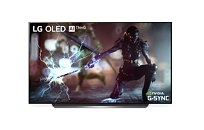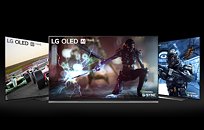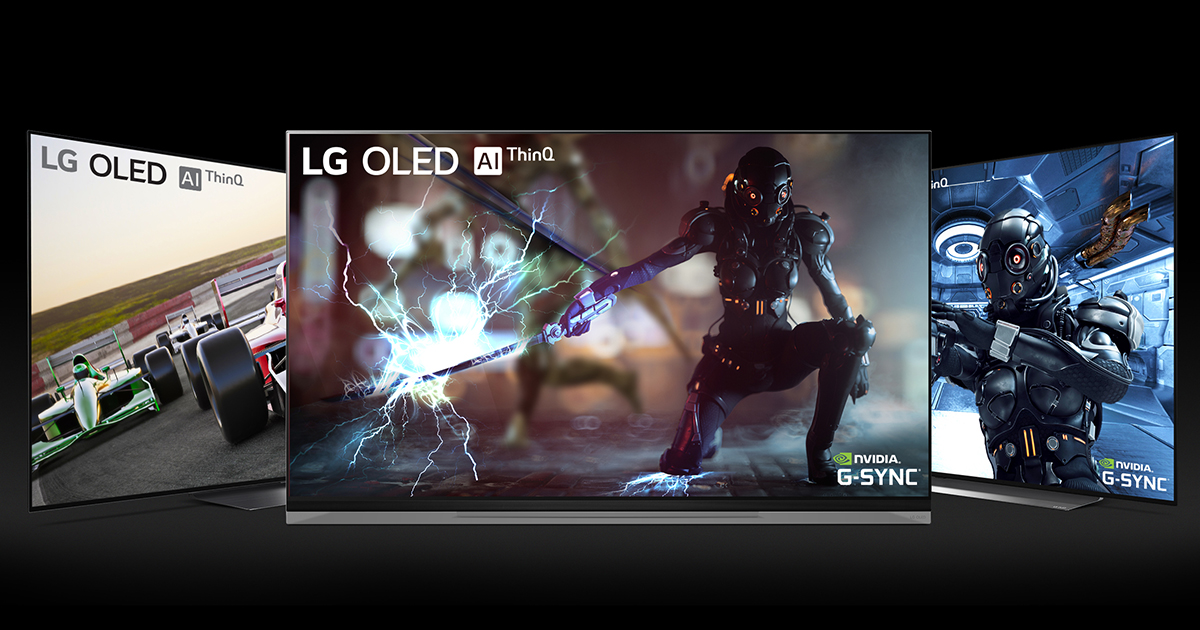- Joined
- Aug 19, 2017
- Messages
- 3,262 (1.13/day)
LG Electronics USA announced that 2019 OLED TVs are receiving a firmware update starting this week, enabling stunning game play via NVIDIA G-SYNC Compatible technology.
NVIDIA G-SYNC Compatible support will be available on the E9 series (65 and 55 inches) and C9 series (77, 65 and 55 inches) as well as the B9 series (65 and 55 inches) LG OLED TV models in the United States in November.


With G-SYNC Compatible support, the critically-acclaimed LG OLED TVs will deliver the smoothest, most immersive gaming experience without the flicker, tearing or stuttering common to most displays. Gamers have long valued LG OLED TVs for their exceptional picture quality, low input lag and ultra-fast response time. The addition of G-SYNC Compatible support allows gamers with GeForce RTX 20-Series or GTX 16-Series GPUs to fully enjoy extreme responsiveness and optimized visuals on LG's large OLED TVs from 55 inches up to an immersive 77 inches.
"If you'll pardon the pun, this is truly a game changer for the legions of gamers out there," said Tim Alessi, head of home entertainment product marketing at LG Electronics USA. "Partnering with NVIDIA to integrate their G-SYNC Compatible support into our category-leading LG OLED TVs delivers a new standard in gaming performance and opens a new world of large-screen 4K gaming experiences only found on LG OLED TVs."
For more information on LG TVs, visit LG.com.
View at TechPowerUp Main Site
NVIDIA G-SYNC Compatible support will be available on the E9 series (65 and 55 inches) and C9 series (77, 65 and 55 inches) as well as the B9 series (65 and 55 inches) LG OLED TV models in the United States in November.


With G-SYNC Compatible support, the critically-acclaimed LG OLED TVs will deliver the smoothest, most immersive gaming experience without the flicker, tearing or stuttering common to most displays. Gamers have long valued LG OLED TVs for their exceptional picture quality, low input lag and ultra-fast response time. The addition of G-SYNC Compatible support allows gamers with GeForce RTX 20-Series or GTX 16-Series GPUs to fully enjoy extreme responsiveness and optimized visuals on LG's large OLED TVs from 55 inches up to an immersive 77 inches.
"If you'll pardon the pun, this is truly a game changer for the legions of gamers out there," said Tim Alessi, head of home entertainment product marketing at LG Electronics USA. "Partnering with NVIDIA to integrate their G-SYNC Compatible support into our category-leading LG OLED TVs delivers a new standard in gaming performance and opens a new world of large-screen 4K gaming experiences only found on LG OLED TVs."
For more information on LG TVs, visit LG.com.
View at TechPowerUp Main Site




 I'll be in the market for both a new GPU and a new TV in the coming year or so, so stuff like this is ... interesting.
I'll be in the market for both a new GPU and a new TV in the coming year or so, so stuff like this is ... interesting.